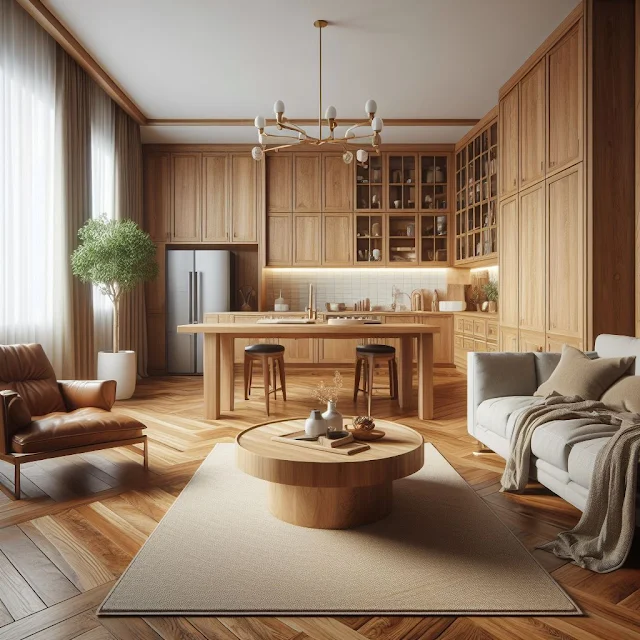As we step into the captivating world of interior design, we encounter powerful tools that transform mere spaces into harmonious havens. Let’s explore three essential concepts: rhythm, repetition, and pattern mixing. Whether you’re a seasoned decorator or a curious beginner, these principles will help you elevate your design game and achieve the best results.
1. Rhythm: The Dance of the Eye
What Is Rhythm?
Rhythm is the invisible choreography that guides your eye through a room. Moreover, it generates movement and creates a harmonious flow between design elements. Imagine a gentle waltz—the eye gracefully glides from focal point to focal point, creating that satisfying look we aim for.
How to Achieve Rhythm:
- Repeating Elements: Recurring design elements such as patterns, colors, shapes, or textures should be strategically placed throughout the space.
- Visual Movement: Consider how your eye travels. Rhythm ensures a seamless journey.
Rhythm Techniques
Repetition of Materials: Consistency
Repetition isn’t limited to shapes; it extends to materials. Consistently using the same material—such as wood—across different furniture pieces establishes a rhythmic flow. So imagine a room with wooden flooring, cabinets, and a coffee table. By sharing one material you can unify the space.
Patterned Fabrics: Visual Flow
Patterns create rhythm too. Consider using repeating fabric patterns on upholstery, cushions, or curtains. A room with striped chairs, floral cushions, and geometric drapes feels harmonious. For instance, picture a musical staff where each note represents a pattern.
- Balance Patterns: Combine larger-scale patterns with smaller-scale ones or solid colors. In brief, solids provide relief alongside bold, patterned elements.
- Group in Odd Numbers: Arrange items in groups of three or five. In short, odd numbers create visual harmony.
- Color Harmony: Stick to similar or complementary colors for a cohesive look.
- Opposites Attract: Don’t hesitate to mix geometric prints with floral patterns. That is, as long as you follow the above guidelines.
Gradation: Layered Intensity
Gradation involves a gradual change in intensity. Apply this to furniture by arranging items from light to dark or small to large. For instance, a nesting set of tables gradually increasing size creates a pleasing rhythm. Think of it as a musical crescendo.
2. Repetition: The Glue That Binds
What Is Repetition?
Using the same or similar elements repeatedly within a room creates a cohesive look and feel. You can achieve it by placing repeating elements throughout your space for the eye to land on.
Examples of Repetition:
- Color: Repeating a specific color (e.g., serene blues) throughout the room.
- Pattern: Using the same pattern (e.g., stripes) on curtains, cushions, and rugs.
- Texture: Consistently incorporating a particular texture (e.g., rough wood) in furniture and decor.
Repetition Techniques
Anadiplosis: Repeating Elements
Anadiplosis involves repeating the same furniture elements throughout a room. That is just like a rhythmic beat, it is stable and predictable. Imagine a series of identical dining chairs placed around a table. The repetition creates a pleasing visual flow.

Symmetry: Balance and Harmony
Symmetry can create balance and harmony by placing identical or similar furniture pieces on either side of a room. Therefore, think of a matching pair of bedside tables on each side of your bed. The mirrored arrangement guides the eye seamlessly.
Negative-Positive Restatement: Contrast and Impact
Have you heard of the technique where you state an idea twice, first in a negative and then positively? It’s a clever way to emphasize your thoughts and make them stick in people’s minds. Let me explain how it works! Apply this to furniture by pairing contrasting elements. For instance juxtaposed with a bright, patterned accent chair, a dark leather sofa creates a dynamic visual rhythm.
3. Mixing Prints: A Bold Symphony
Why Mix Prints?
Working with patterns can feel like conducting an orchestra. It’s both thrilling and daunting. But fear not! Mixing prints adds depth, visual interest, and personality to your space. That is, as long as you feel these patterns are not meant to be together, you can follow the pro tips below to choose the best match.
Tips for Successful Pattern Mixing:
- Scale Contrast: Pair larger-scale patterns with smaller-scale ones. Bold florals alongside subtle geometric prints create a dynamic ensemble.
- Odd Numbers: Group patterns in odd numbers (e.g., three or five) since odd groupings feel livelier.
- Color Harmony: Stick to similar or complementary colors. Harmonious palettes tie patterns together.
- Opposites Attract: You can fearlessly mix different types of patterns. Geometric prints can dance with delicate florals if you follow the guidelines.
Try This at Home: Your Pattern Adventure
You can begin by assessing your existing elements. First, examine your pillows and notice recurring colors or patterns to select the next pillow you want to use. Then, look at your art pieces and detect consistent themes or textures. For example, you might be able to find rounded or sharp elements and warm or cold colors.
Furthermore, you can identify repeating elements. Start with the colors that appear repeatedly. Then identify any recurring patterns (stripes, chevrons, etc.) and textures (smooth, rough, etc.).
Mix and Remix:
Experiment: Combine different elements. Pair a striped pillow with a floral one. Hang artwork with complementary colors.
Spread Repetition: Disperse these repeating elements throughout your space. Let them create a delightful rhythm.
Remember, just like a well-composed melody, a room with great rhythm captivates the eye and invites exploration. Use these techniques to orchestrate your furniture ensemble and create a harmonious living space! 🪑🎵
If you want to visit our gallery of inspiring furniture designs and get ideas for your own space, you may go to our homepage.
Find 3D printable designs on our Cults3D webpage.






Comments
Post a Comment